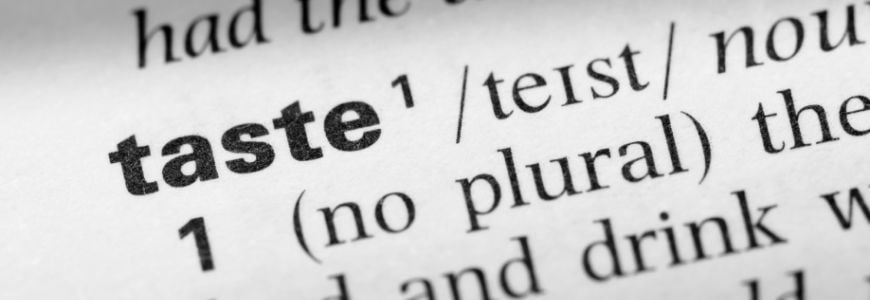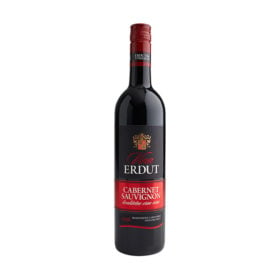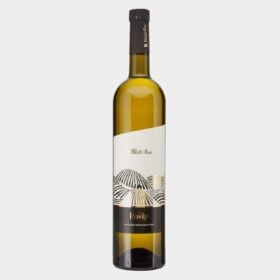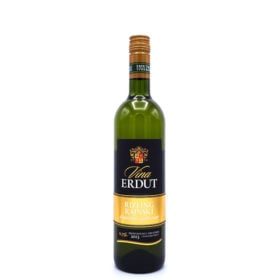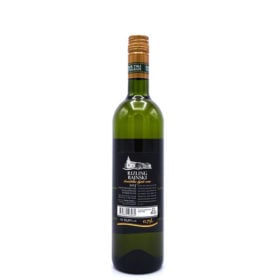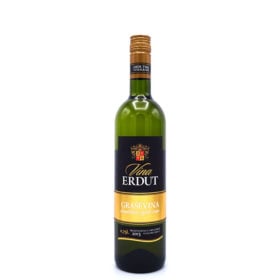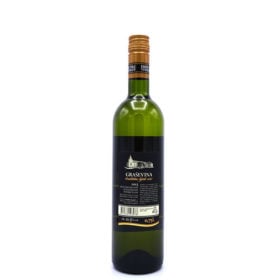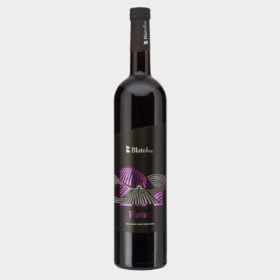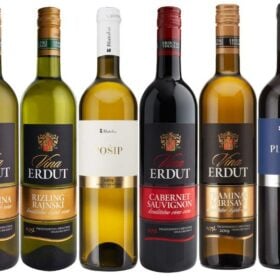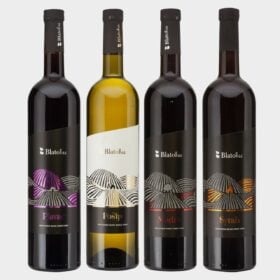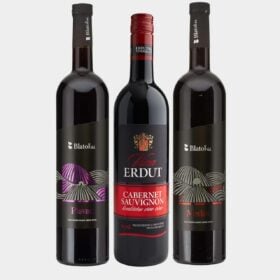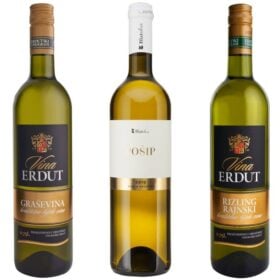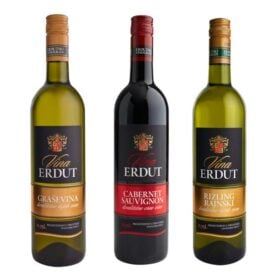Welcome wine lovers! This is a glossary of wine terms created especially for people like you who are interested in wines, especially wine students and beginners in wine drinking. In this dictionary you will find meaning and definitions of the most important wine terms. With this information, you can enjoy wine even more and make better choices when buying wine in the future.
You may be wondering: what are the most important wine terms I should know? This wine terminology glossary provides definitions for some of the most essential wine words.
Understanding these wine terms will help you communicate better with wine experts and enjoy this classic drink even more. So dive in and learn about wine terminology! You never know when it might come in handy.
Content
Meaning of the different wine terms
- earthy is a description used for wines with aromas reminiscent of soil, mushrooms, and other moist, natural scents.
- To breathe is to expose the wine to oxygen to enhance the flavors (see “aeration).
- aftertaste is the taste or aftertaste of a wine.
- Alcohol is ethanol (ethyl alcohol), the product of fermentation of sugars by yeast.
- Anosmia is the loss of smell.
- Amarone is a juicy one Red wine with a higher alcohol content, from the Veneto region of northern Italy; Made primarily from Corvina grapes that have been rack-dried before pressing.
- Appellation is a legally defined region known for the production of good wine. A appellation is a legally defined and protected geographical indication that is mainly used to indicate where the grapes for a wine are grown.
- AROMA is the smell of wine, especially young wine (other than “bouquet”).
- balance is harmony between the components of the wine.
- Barbera a red wine grape found mainly in the Italian region of Piedmont that produces full-bodied red wines with deep ruby colours, full body and low tannin levels.
- Barrique is a 225 liter oak barrel originally used for storing and maturing wines, originating in France. Often noted for woody and vanilla-like aromas in the wine.
- aerate is the process of deliberately adding oxygen to wine to round out and soften it.
- Protected Origin Designation is a European regulation that protects regional products against counterfeiting.
- Reviews Wine ratings are based on a XNUMX-point scale.
- Bijelo wine is the Croatian term for White wine
- Bitter is a taste sensation perceived on the back of the tongue and is caused by tannins
- Blaufränkisch (Frankovka) is a red wine grape variety grown in Croatia, Austria and Hungary. It makes medium to full-bodied, dry and fruity wines. The grape produces rich, full-bodied wines with aromas of dark fruit, pepper and chocolate. Blaufränkischwines are typically aged in oak barrels, giving them their characteristic vanilla notes.
- Blend is a wine made from more than one grape variety. Also see vintage.
- Floral is a description often used for white wines with aromas reminiscent of flowers.
- Bodysuit is the weight or thickness of a wine in the mouth.
- Bouquet is the smell of old wine (other than “aroma”).
- Bordeaux is the area in southwestern France that is considered one of the largest wine-producing regions in the world. See French wine regions.
- Botrytis cinerea is also known as noble hand, and it is a beneficial fungus that attacks grape berries, causing them to shrivel and become raisins. This concentrates the sugars and flavors in the juice, making for some of the world's most prized dessert wines.
- Brettanomyces is a wine-perishable yeast that produces barnyard, mousey, metallic or plaster aromas.
- Brilliant is a tasting note for wines that appear sparkling clear
- Brix is the benchmark for sugar in grape juice, and it's important because it indicates how much potential alcohol a wine has.
- Brut is French term for dry champagnes or sparkling wines.
- man is the plug used to seal a wine barrel
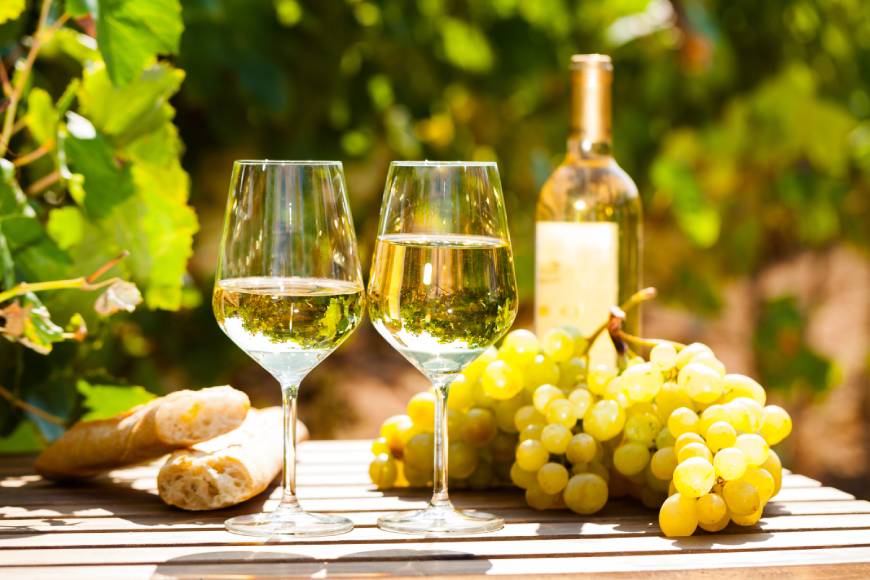
- Cabernet Sauvignon is a red wine grape that produces wines with full body and high tannins† The flavors of Cabernet Sauvignonwines can be black fruit, cassis and green pepper.
- Champagne is a sparkling wine made in the Champagne region of France using the méthode champenoise. Champagne is only called champagne if it comes from the Champagne region of France.
- Chardonnay one of the world's most popular wines, a White wine originating from Burgundy which can range in taste from clean and crisp to rich and complex. Today the wine is made all over the world.
- Chenin blanc a white wine grape found almost exclusively in South Africa that produces light, balanced wines that dry or semi-dry.
- Chaptalization, in German enrichment of Improvement of mentioned is adding sugar to wine before or during fermentation to increase the alcohol content. Chaptalization is illegal in some parts of the world. In the European Union it is very strictly controlled.
- Citric acid is one of the three predominant acids in wine. It is a naturally present acid in wine.
- Claret is the name the English use when referring to the red wines of Bordeaux
- Cloying is a tasting term used to describe wines with too much sugar, which can make them seem heavy or syrupy.
- Complex is a wine with numerous scents, nuances and flavors
- Cuvee has different meanings depending on the country or region. In France, the term vintage used for the bridge which is extracted from the first pressing of grapes. In many other countries, such as Croatia, Hungary, etc., wine is made from different types of grapes, also called a blend or blend wine.
- Black wine is the Croatian term for Red wine† Literally translated it means “black wine”.
- Classified vintage is a top class vineyard designated in the Bordeaux Classification of 1855.
- Crush is the English term for harvesting.
- decant is the process of pouring wine from the bottle into a special container called a 'carafe'.
- Sparkling wine - Semidry is French term meaning “semi-dry” and used to describe a sweet sparkling wine.
- dessert wine is a sweet wine which is meant to be enjoyed with dessert or after dinner.
- Depth is a tasting term that describes wines with layers of flavor and complexity.
- Dolcetto a light, fruity red wine grape most common in the Italian region of Piedmont.
- Domaines Schlumberger is a renowned French producer of some of the most sought-after red Bourgognes in the world.
- thirst quenching is a tasting term used to describe wines that are refreshing and easy to drink.
- dregs is the sediment (yeast, pieces of grapes, etc.) that collects at the bottom of a wine barrel or tank during fermentation.
- Dry is a taste sensation often attributed to tannins and which causes a wrinkling sensation in the mouth; the opposite of sweet† That's why this kind of wine becomes Dry wine .
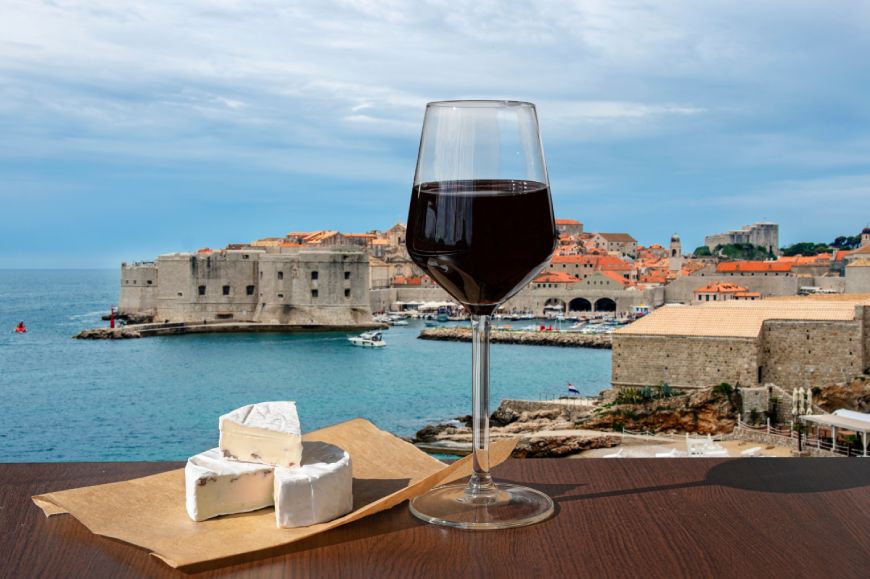
- noble rot - see 'botrytis cinerea'.
- one-dimensional is a tasting term used to describe wines that lack complexity and depth of flavor.
- Oak is a wood often used to make wine barrels, and it can impart flavors of vanilla, spice, and toast to wine. Oak wood adds flavorings including vanilla, clove, smoke and coconut aromas to the wine. It allows oxygen to penetrate very slowly, a process that makes the wine smoother and less astringent.
- Ethyl alcohol, the product of fermentation of sugars by yeast, is also known as ethanol.
- Extract is the soluble non-volatile substance in wine and contains tannin, coloring pigments and flavourings.
- Phenolic Compounds natural compounds present in grape skins and seeds (see “tannin").
- France a country whose wines are considered to be among the best in the world.
- fruity is a tasting term for wines with strong aromas and flavors of fresh fruit.
- fruit-forward is a tasting term that describes wines with ripe fruit flavors and very little oak influence. It is a popular term to describe a wine style where the fruit flavors are dominant.
- Sparkling is a Prosecco, sparkling wine from Italy, which has less carbonation. The opposite of this is a Spumante.
- full bodied is a tasting term that describes wines that are rich and mouth-filling.
- Fume Blanco is a Sauvignon Blanc that has been fermented in oak.
- baked goods is a description used for wines with aromas reminiscent of bread, pastries, and other baked goods and pastries.
- Bottled on an estate means the winery has full control over all aspects of production, from vineyard to bottling.
- Spirits are drinks such as rakija (such as šljivovica), vodka, whiskey and gin that are made by distilling fermented fruits, grains or vegetables.
- Imported means that a wine was produced in another country and then brought to another country for sale.
- Closed is a term that describes underdeveloped and young wines whose flavors do not express themselves well
- Corked or cork is when a wine has been affected by cork smell, giving it an unpleasant odor.
- Structured is a taste term used to describe wines that are well balanced and have a firm tannin backbone.
- Gewürztraminer is a white wine grape grown in Germany. The wines made from this grape are rich in spicy aromas and full flavours, ranging from dry to sweet.
- Gist is a microorganism endemic to vineyards that is used commercially to convert grape sugars into alcohol. Yeast is an important ingredient in winemaking and the type of yeast used can affect the taste of the wine.
- Glycerol is a type of alcohol produced during fermentation that wine sweet and can make it sticky.
- Cheap is a relative term, but generally refers to wines that cost less than $5 a bottle. They are often table wines of lower quality.
- Grassy is a description used for wines with aromas reminiscent of freshly cut grass or cut hay.
- Graševina is a white wine grape variety grown in Croatia. It makes medium-bodied, dry and refreshing wines. Graševina is a white grape variety grown throughout Central Europe, especially in Croatia, the Czech Republic, Hungary, Romania, Serbia, Slovakia and Slovenia. Sometimes it is also called Welschriesling or Olaszrizling. But it has nothing to do with the Riesling to make. Graševinawines are typically light in taste with floral aromas.
- Grenache is a dark-skinned red wine grape most common in Spain and France that produces rich, fruity wines with low acidity.
- Green is a tasting term used to describe wines with high acidity and no ripe fruit flavors.
- grouping des Grands Crus Classés en 1855 is an association of the largest producers of Red wine in the Médoc region of Bordeaux.
- Heet is a taste term used to describe wines with too much alcohol, which can make them taste “burnt” or “fiery”.
- The mark The maker's signature is a distillery's signature stamp applied to bottles of rakie, whiskey, vodka, and other spirits.
- Infusion is when herbs, fruits, or other flavorings are soaked in hot water to extract their flavor. This is how many flavored teas are made.
- Intense is a taste term used to describe wines with very strong flavors.
- Istrian Malvasia is a white wine grape variety grown in Istria, Croatia. It makes full, dry and fruity wines. Istrian Malvasia is a white grape variety grown in the Croatian region Istria. The grape produces fresh, fruity wines with moderate acidity and aromas of citrus fruits and white flowers. Istrian Malvasia wines are typically light bodied.
- jammy is a description often used for red wines with flavors reminiscent of jam or preserves.
- Jong is an unripe wine that is usually bottled and sold within a year of harvesting. Young wines are known for their fresh and crisp flavors.

- Carafes - Decanters is a decorative bottle that is used during a dinner party. Wine is served in a carafe. Decanters are often beautifully designed. Its purpose is to allow oxygen to enter the wine to make it more pleasant to drink.
- Cellar is a temperature and humidity controlled facility to store wine.
- clearance is a process used to remove unwanted particles (such as proteins) from wine.
- Cold Stabilization is when wine is chilled so that any remaining tartaric acid crystals fall out of the slurry and can be removed before bottling.
- Cork is a term denoting a wine that has undergone a cork odor (not a wine with cork particles floating around)
- cork smell is unwanted aromas and flavors in wine, often associated with wet cardboard or moldy cellars
- Corkscrew is a wine cork removal device that contains a handle, worm and lever. See: the seven types of corkscrews
- spicy of herbaceous is a test term that denotes the smells and flavors of fresh herbs (eg basil, oregano, rosemary, etc…).
- Quality wine is a term that is used, among other things, in Croatia to indicate that it is a quality wine.
- Length is a trial term that describes how long the flavors of a wine linger in your mouth.
- Body is a tactile sensation that describes the weight and fullness of wine in the mouth. Wine can be light, medium or full.
- light bodied is a tasting term that describes wines that are light and refreshing, with a low alcohol content.
- Loire Valley is a region in France known for its fresh, white wines with a lot of wine acid and made from Sauvignon Blanc and Chenin Blanc.
- Maceration is the process of soaking grape skins in wine juice to extract colors and flavors.
- Malolactic fermentation is a secondary fermentation where the sourness of malic acid in wine is transformed into a smooth, milky sensation. Wines described as “buttery” or “creamy” have gone through “malo”.
- medium-bodied is a tasting term that describes wines of moderate weight and alcohol content.
- Lactic acid is a type of acid produced during fermentation and it can give wine a sour or milky taste.
- Meritage wine is a blend of two or more grape varieties, often including Cabernet Sauvignon en Merlot.
- Merlot is a red wine grape that produces medium to full bodied wines with black cherries and spicy flavors. Merlot is typically smooth, soft and gentle. Some of the world's most expensive and prized wines are made from Merlot-grapes.
- Microbrewery is a small brewery that produces beer in limited quantities.
- mouthfeel are the physical sensations (texture, warmth, etc.) that wine produces in your mouth.
- Must is unfermented grape juice including seeds, skins and stems.
- Mouvedre is a warm weather red wine grape common to the Rhône Valley in southern France and known for its deep color and early aromas, often blended with Syrah blend (sometimes also called blend wine or cuvee).
- Sparkling wine a type of wine that is made effervescent by a secondary fermentation in the winemaking process; champagnes and sparkling wines can vary in style from very dry (of course) to sweet (sec and demi-sec).
- Oenology is the study of all aspects of wine production, from grapes to bottling.
- off dry is a tasting term used to describe wines with a hint of sweetness. It's easy for an advanced wine drinker to just say that off-dry wine has a smooth or mild sweetness, but it's hard to describe what that might taste like to you. Sometimes an off-dry wine can be remarkable sweet but other times it's a surprise when a wine is off-dry because that touch of sweetness is balanced with the other elements in a wine. Riesling is a good example of off-dry wine.
- Unfiltered is a term used to describe wines that have not been clarified before bottling. These wines may contain sediment.
- Immature indicates that this is a wine in which the tannins in the grapes have not yet fully matured.
- Yield is the productivity of a vineyard. A high yield means more grapes per hectare, which in turn means more wine.
- Ready to drink is a wine that has undergone enough aging to be drunk.
- Open is a tasting term that describes wines that are ready to drink now and do not require further maturation.
- Topping up is the evaporation of wine in wooden barrels.
- old world style is a term used to describe traditional European wines that tend to be heartier and less fruity than New World styles.
- Oxidation occurs when wine is exposed to air, and it can make wine taste stale, nutty, or like a raisin.
- passito is an Italian dessert wine made from currants and raisins that are fermented very slowly over several months.
- Petillant Natural (or “pet-nat”) is a type of sparkling wine that is bottled before fermentation is complete, resulting in a lower alcohol content.
- pH is a scale that measures how acidic or basic a substance is. Wines typically have a pH between 2,5 and 4.
- phylloxera is a microscopic insect that vines kills by attacking their roots.
- Pinot gris (Pinot Grigio) a low acidity white wine grape that helps produce rich, lightly perfumed wines that are often more colorful than other white wines.
- Pinot Noir is a red wine grape known for producing delicate and smooth wines of rich complexity. Pinot Noir is a versatile dinner companion and can be combined with many different types of dishes and is an ideal wine for various wine and food pairings.
- Spicy is a taste term used to describe wines with peppery or floral notes.
- Sparkling wine is a sparkling wine from Croatia† It is somewhat similar to the French Champagne, Italian Processo or the Spanish Cava, but they are certainly not the same.
- Plavac Mali is a red wine grape variety grown in Croatia. It makes full, robust and fruity wines. Plavac mali is a red Croatian wine grape grown along the Dalmatian coast. The grape produces full-bodied wines with high tannins and strong aromas of dark fruit. Plavac maliwines can also be quite spicy, with aromas of black pepper and cloves.
- plonk is a British slang for cheap wine; also used to describe very low quality wines.
- polushuno vino is a Croatian name for semi-dry wine.
- Poluslatko vino is the Croatian term for a semi-sweet wine.
- pomace are the solid remains of grapes after they have been pressed for wine. It can be used to make grappa and other spirits.
- Posip is a white wine grape variety grown in Croatia. It gives light, dry and refreshing wines. Posip is a Croatian white wine grape grown along the Dalmatian coast. The grape is most common in the Croatian regions Dalmatia en Istria. Posipwines are typically light in taste with mild acidity and aromas of citrus fruits and white flowers. The grape can also produce fuller-bodied wines with more honeyed and floral aromas when grown in warmer climates.
- Possessions is a United States trial term used to describe wines with a high alcohol content that can make them taste “hot” or “burnt.”
- Pre-fermentation Maceration is when grape skins are soaked in wine juice for a period of time before fermentation begins.
- Primary flavors are the main flavors you taste in a wine.
- taste is the process of evaluating the aromas, flavors and overall quality of a wine. During the taste of wine you usually first look at the color of the wine, smell it and finally take a sip. You can also swirl the wine in your glass to release the aromas.
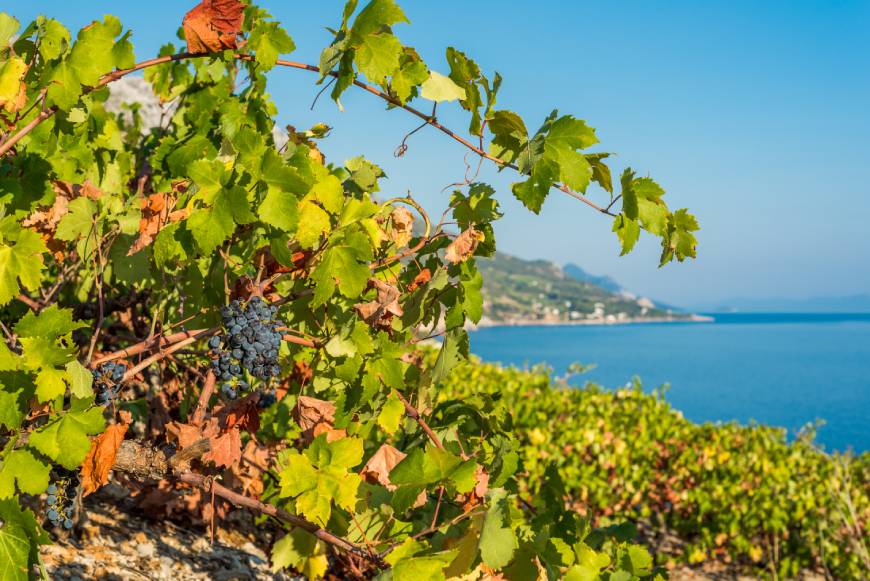
- Qvevri or Kvevri are large, egg-shaped clay pots buried underground and used for fermenting, storing, and aging wine in Georgia.
- residual sugar is the sugar left in a wine after fermentation is complete. Wines with a high residual sugar content are possible sweet or syrupy taste.
- Riesling is a white wine grape from Germany known for its floral perfume; Rieslings can range in style from crispy and dry until full and sweet.
- Empire is a taste term used to describe wines that are full-bodied and complex.
- Ripe indicates a wine that is ready to drink.
- Rosé (Blush Wines) are pale pink wines made from various red wine grapes; rosés get their color from a very short period of contact with the grape skins during the winemaking process; rosés can dry or somewhat sweet are and are best chilled. Ideal as spring wine or summer wine.
- astringent is a taste term that refers to the harsh, bitter and drying sensations in the mouth caused by high levels of tannin.
- Sangiovese is a red wine grape best known as the Italian Red wine, Chianti; Sangiovese wines are typically hearty and dry with soft textures and flavors of herbs, raspberries and licorice.
- Sauvignon Blanc is a white wine grape known for its grassy, spicy flavors. It is a popular choice for shellfish or as a refreshing alternative to Chardonnay.
- Secondary flavors are the flavors you taste in a wine in addition to the primary flavors.
- sediment is the solid material (yeast, pieces of grapes, etc.) that settles to the bottom of a wine bottle or tank over time.
- slatko wine is a Croatian name for a sweet wine
- Taste are odors perceived in the mouth.
- Sommelier is a professional specializing in wine service and education.
- sparkling wine is a Prosecco, sparkling wine from Italy, which has a little more carbonation. The opposite of this is a Frizzante.
- Stop hole is actually the filling hole of the wine barrel. The hole is covered with a cork or cork-like stopper. In English this is sometimes called a "Bunghole".
- suho vino is a Croatian name for Dry wine.
- Syrah (Shiraz) is a red wine grape that can produce giant red wines with strong tannins and complex combinations of flavors including berries, plums and smoke. It is best known as Shiraz in Australia and South Africa.
- table wine is a type of wine intended to be drunk with food. It is usually light in taste and has a low alcohol content.
- Tannins is a compound found in grape skins, seeds and stems that can give wine a dry, astringent taste.
- Tart is a taste term used to describe wines that are sour and wrinkle the mouth.
- Teran is a red wine grape variety grown in Croatia, especially in Istria† The grape produces full-bodied wines with high tannins and strong aromas of dark fruit. Teranwines can also be quite spicy, with aromas of black pepper and cloves.
- Terroir is the unique combination of climate, soil and terrain that gives each wine region its own flavor profile. A Charodonnay tastes different every time, depending on the terroir where it is grown grapes grow.
- traditionalist is a winemaker that uses Old World methods and eschews modern technology.
- Turf is rotten vegetation often used as fuel. It can also impart smoky flavors to whiskey and other spirits.
- typical is a trial term that describes how well a wine expresses the characteristics inherent in the grape variety.

- Ullage is the space between the barrel and the wine level
- Variety is a type of wine made from a single grape variety (for example, Cabernet Sauvignon, Chardonnay, etc.). Within the European Union, a wine with a particular variety must contain at least 85% of that variety. 85% is a common minimum standard; national regulations may raise the limit in certain cases, but not lower it. It is not mandatory to indicate on the label what these percentages are.
- vat is the oak container used for fermenting and aging wine.
- Barrel fermentation is when wine is fermented in oak barrels as opposed to stainless steel tanks.
- Third Party Verification is a process by which an independent organization tests and certifies the quality of a product.
- Aging is the storage of wine in barrels, stainless steel tanks and bottles to bring them to a more desirable state.
- To is a tasting term that describes young wines with bright fruit flavors and lively wine acids.
- winemaking is the process of making wine.
- Vinology is the scientific study of wines and winemaking.
- Vintage is the year in which the grapes for a particular wine were harvested.
- Viognier is a white wine grape that is rare and unique; Viogniers typically exhibit peach, apricot and sometimes spicy flavors.
- Wine is a term in many other languages and means the same as wine
- Vitis Vinifera is the wine type that comprises more than 99% of the world's wine. It is also called the vine, called grape vine or - after the fruit - grape, is a plant from the vine family.
- Volatile Acidity is a measure of the acetic acid content of a wine. High volatile acids can cause wine to taste vinegary or "off".
- Vrhunsk vino is one of the different classifications used in Croatia when assessing wine. A wine with the classification 'Vrhunsko Vino' means that it is a wine of top quality. In Spain, this type of wine is given the label Book now along. In Germany these are often referred to as Prädikatswein.

- Wine is fermented grape juice. Wine is made all over the world, with each region producing wines with unique flavors.
- Wine with a high alcohol content is any wine with more than 14% alcohol.
- Wineglass is a drinking cup specially designed to enhance wine tasting. The shape of the glass can affect how the wine smells and tastes, so choosing the right wine glass for the type of wine you drink is important.
- tartaric acid is the main acid in grapes, tartaric acid promotes the taste and maturation of wine.
- Wine cellar is a temperature and humidity controlled facility to store wine.
- Wine taste is the act of perceiving flavors in wine using the three senses: sight, smell and taste. Wine tasting can be a fun way to learn about different wines and find new favorites.
- WSET — The Wine & Spirit Education Trust† WSET offers courses on wine, spirits and beer. They offer different levels of certification so you can learn as much or as little about wine as you want.
-
Original price was: 19,98. 13,99Current price is: 13,99. Add to Cart
- Zinfandel is a red wine grape that produces wines with medium to full body and berry or spicy, peppery flavors. Zinfandel is a great choice for pizza and barbecue sauce.
- Sweet is a taste term used to describe wines with a high content of residual sugar to describe.
- Acidity is one of the most important aspects of wine, it is what gives wine its vibrancy and crispness.
- Zweigelt is a red wine grape variety grown in Croatia and Austria. It makes medium to full-bodied, dry and fruity wines. The grape originated in 1922 as a cross between two Austrian grape varieties, Blaufränkisch and Saint Laurent. Zweigeltwines typically have fruity aromas of black cherries and raspberries, with subtle notes of spice.
- Žlahtina is a Croatian white wine grape grown on the island of Krk. The grape produces light to medium bodied wines with high acidity and subtle fruit flavours. Žlahtina-wine is clear and greenish yellow in color. The taste is light and refreshing with a fruity aroma.
Conclusion on the meaning of the wine terms
In general, wine terms can be confusing and overwhelming, but they don't have to be. By taking the time to learn some of the most common wine terms, you can approach your next wine purchase with confidence. Whether you're a novice or a seasoned wine drinker, understanding wine terminology can only enhance your experience.
If you'd like to know more, let us know in the comments below. The meaning of the different wine terms can be confusing, but it's important to learn them if you want to be well prepared and buy wine in the UK. Cheers!

